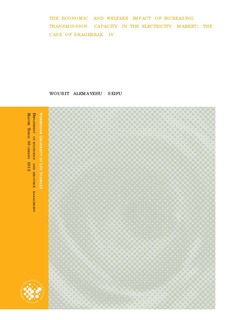The economic and welfare impact of increasing transmission capacity in the electricity market: the case of skagerrak iv
Master thesis
Permanent lenke
http://hdl.handle.net/11250/187458Utgivelsesdato
2013-05-29Metadata
Vis full innførselSamlinger
- Master's theses (HH) [1072]
Sammendrag
In this paper we present an empirical analysis of the economic and welfare impact of
increasing the transmission capacity by taking Skagerrak 4 with 700 MW between South
Norway (NO1) and West Denmark (DK1) as a case study. We examine the impact of
increasing the transmission capacity on electricity prices, trade and overall welfare gains
using simulation modeling. Moreover, we explore the potential for further expansions. To
address these issues, we first developed an empirical model for both market using hourly
data set from 2004 to 2010. For the simulation part, we took different years and initial
reservoir levels. Our findings show that the transmission capacity upgrade amplifies the
power flows from low cost generation area (NO1 in wet year and DK1in dry year) to high
cost generation area (NO1 in dry year and DK1 in wet year). With regards to prices,
following the path of export, NO1’s price increases for high inflow and reservoir level as
well as peak hours and it decreases for low inflow and reservoir level. In contrast, price in
Dk1 decreases when NO1 has more water and during peak hours. During off-peak load
hours, price increases as DK1 increases its exports during these hours leading to price
convergence. However, we still have price spikes during wet year. From net welfare point
of view, the results show that upgrading the interconnection improves social welfare
when NO1 has high inflows. For a dry year, transmission capacity upgrade leads to a net
welfare loss even if DK1’s welfare improves when NO1 has high initial reservoir level.
Further upgrading the transmission capacity by 1400MW has still a room for welfare
improvement in wet year. However, upgrading the capacity by 2100MW has no significant impact on net welfare.
